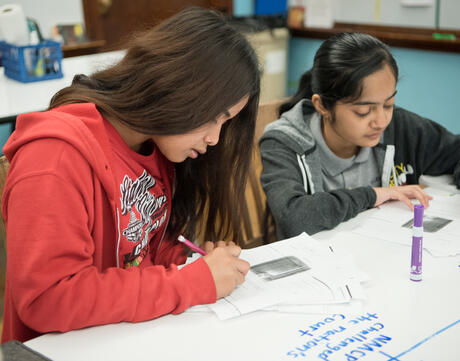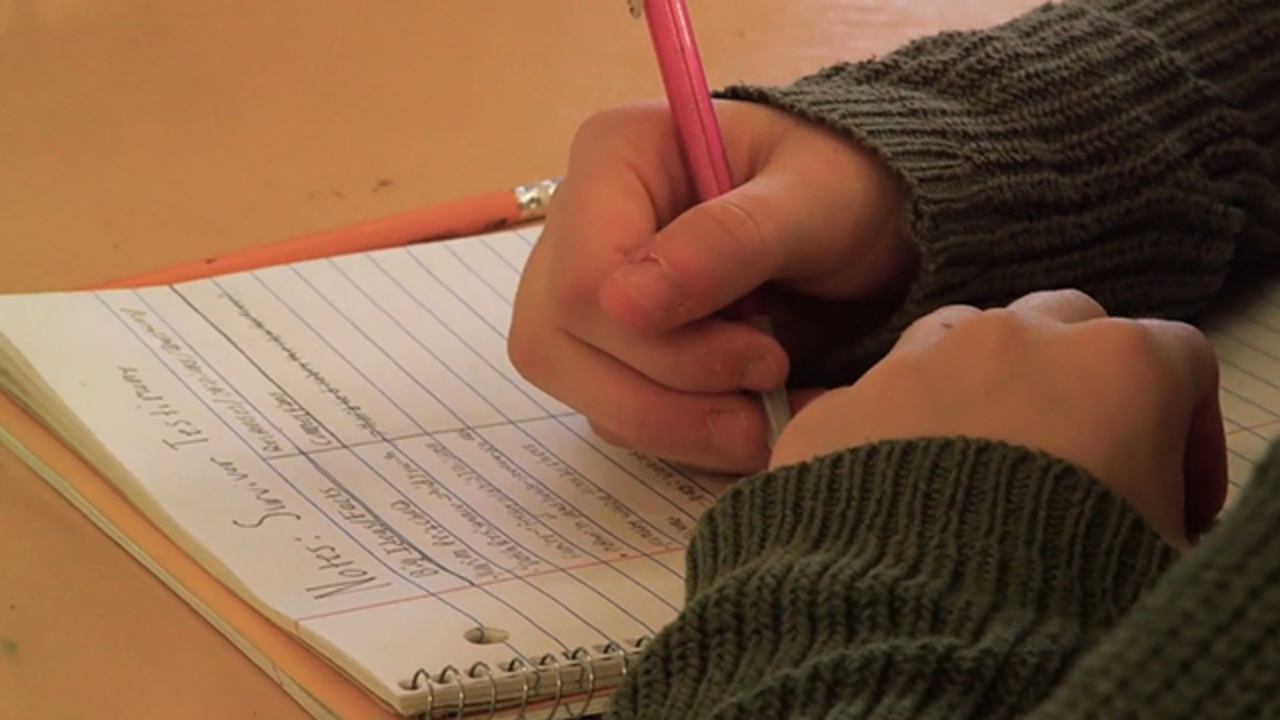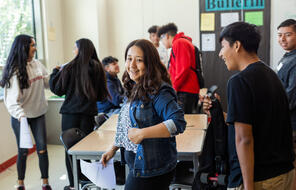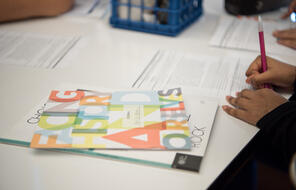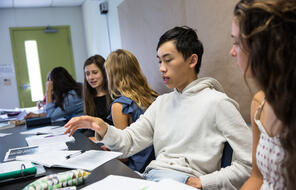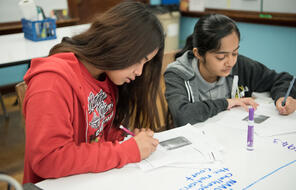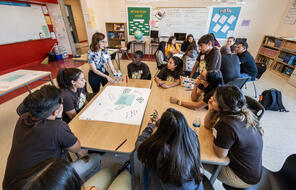[SPEAKER 1] Let's set up for doing two-column notetaking. So a blank page in your notebook with a line down the middle, that's your setup. In eighth grade, I'm spending a lot of time with our students getting better at taking notes, because I want them to have a soft landing in high school. They're not attending a school where lecture and notetaking is a common occurrence. It's necessary for them to get that skill. Two-column notetaking students are capturing big ideas on one side of the page. And the right-hand column is I don't want to say reflection, again, but in a way, it's an opportunity for them to question, to make connections, maybe to draw out further question and next idea from the main idea. I also use video of testimonies of people who are survivors in my course. I would give them the experience first of just listening and watching, and then I would go back and show it again. And doing that, I would allow them to then capture the information. I also don't want the students to feel that they're in this alone when they're notetaking. Some students are very particular about how they take notes. Others are very lacking confidence in how they do it. I know our students do very well collaborating. So they'll have opportunities to compare their notes, talk about the notes with each other, and that in itself is a setup for understanding that everybody's experience is different. What you take out of watching video, listening to video, and put down your paper is your experience of what you get out of it. What's your neighbor's notetaking like? What's your peers like? It's not a secret. I'm not evaluating their notes taking, per se, here, just one person alone. I want them to work together. So collaboration is a big part of what we will be doing today. I'm suggesting you set up the left column with a label of big ideas. I call it big ideas. You can call it main point. You can call it facts. It's the place you're going to just take down the information that you think is important during the testimony, what ideas are most important, and remember what new terms or concepts have been introduced. On the right side, I'm saying you can call it responsive, but you could also call it opinions. That column is where I want you to capture questions, interpretations, any connections you might make. It might be a place where you just write down a quick word. What questions does the information raise for you? What other ideas, events, or texts does this information remind you of? Does it connect with something we've covered in this class? How does the information connect to your own life, outside of this class, your own experiences? What I want to be sure you do is concentrate on filling in the left column during testimony, getting down that information, because you can always go back and write the right column afterwards, too. We're also going to take time after each bit of testimony that we watch to work with our table partners and comparing our notes, and making sure that seeing how each other's experiences of listening to the testimony might enhance your own. We can learn from each other. OK? OK. I want you to please take some time right now, talk with someone, either next to you or at your whole table if you need to, the back table kind of split. And review your notes together. What I'm hoping you'll do is look for similarities. Look for differences. Share your ideas. And don't just share them talking. Fill out your notes based on the ideas and the things that you talk about. The two-column notetaking that the students do is theirs, but just like all their other notes, I collect their notebooks from time to time. I look at how each student is taking notes. I give them some feedback. I also review them in the moment while they're doing it and try to give them feedback. We do strategies over how to abbreviate. Or if a student is having more trouble just getting the thought down because it has to be so perfect, just working on that. Like it's OK. Get a word down for now. I heard some students talking about their notes and comparing whose notes were messier than whose, and we all tend to do that. The reason I'm calling that out is because your notes are your notes. I'm not looking for perfect penmanship. We can practice different abbreviations, different ways of taking notes, but most importantly, you're the one that needs to be able to understand them. I'm not even going to say read them, I'm going to say understand them. So I'm not worried about the look of them. I want them to work for you. So keep that in mind as you're doing your next set of notes, two-column notetaking, for our next testimony. I was surprised by how intense their notetaking was. And I stopped the video at one point because I wanted to be sure to capture that and to call that out for them. I love that they wanted to follow the instructions of how to take notes, but I did not want them to lose the experience of taking in the testimony.
